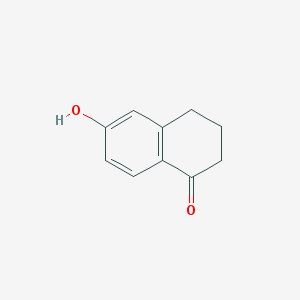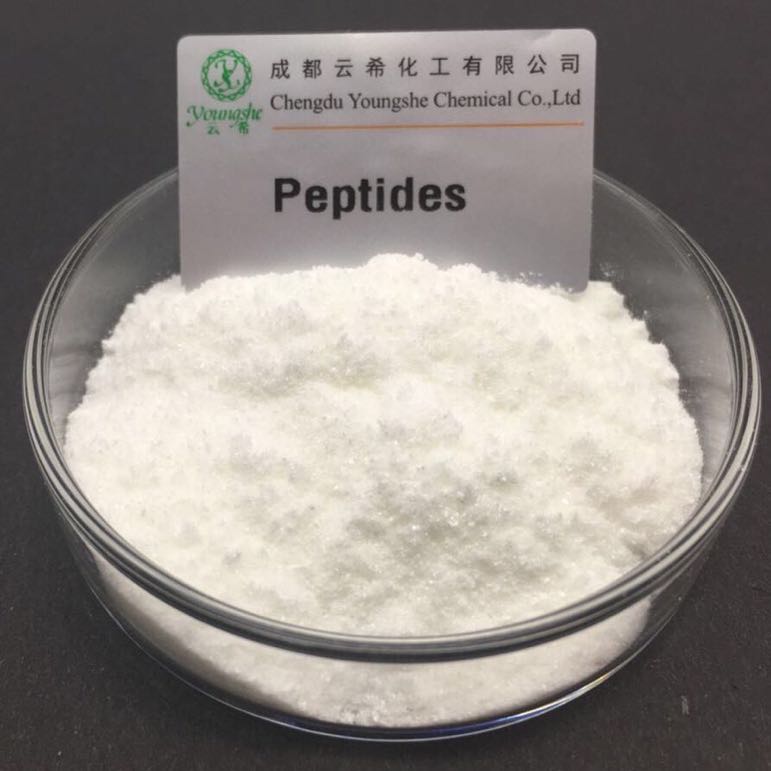-
Categories
-
Pharmaceutical Intermediates
-
Active Pharmaceutical Ingredients
-
Food Additives
- Industrial Coatings
- Agrochemicals
- Dyes and Pigments
- Surfactant
- Flavors and Fragrances
- Chemical Reagents
- Catalyst and Auxiliary
- Natural Products
- Inorganic Chemistry
-
Organic Chemistry
-
Biochemical Engineering
- Analytical Chemistry
- Cosmetic Ingredient
-
Pharmaceutical Intermediates
Promotion
ECHEMI Mall
Wholesale
Weekly Price
Exhibition
News
-
Trade Service
Aspirin, a centuries-old anti-inflammatory analgesic, penicillin, is the first antibiotic to effectively treat a variety of bacterial infections, and Ebutin (Ibtinib, the English-language trade name Imbruvica), is a heavyweight drug that changes blood cancer treatment.
have one thing in common with these important drugs that have emerged in the history of human medicine, and they all belong to the "covalent inhibitors".
specific groups on these compounds can form co-price bonds with their biological targets, thereby irreversibly altering the function of biological targets.
Although several significant drugs in the history of human medicine have included co-price mechanisms, drug developers have long deliberately avoided compounds that can be combined with target co-prices when selecting target inhibitors.
they worry that these compounds are not highly selective enough, and that once they bind to other unrelated proteins, they can become highly toxic.
in recent years, with the development of drug development technology, co-price inhibitors are becoming an important model of drug research and development, they not only produce effective heavy drugs, but also provide a new strategy for targeting "non-essential" targets.
today's Pharmaceutical Mingkang content team will review the development of co-price inhibitors in conjunction with public information.
the use of co-price inhibitors, as mentioned earlier, human use of drugs with co-price mechanisms has a history of hundreds of years.
aspirin was first used as an anti-inflammatory and analgesic in 1899.
it was not until 1971 that the mechanism of its role was understood.
aspirin can be irreversibly combined with Cyclooxygenase (COX), which is responsible for the synthesis of prostatin and thrombosis, to inhibit COX activity and reduce inflammation.
molecular structure of aspirin (Photo: public domain) covalent inhibitors and noncovalent inhibitors are two types of inhibitors targeted at biological targets.
Most small molecule drugs are still non-co-price inhibitors, these compounds can be reversible with biological targets, their affinity with the target often determines the therapeutic effect of the drug, so most small molecule drugs are developed to find compounds that can be combined with biological targets with high affinity.
co-price inhibitors are combined with biological targets, the base group on the compound is able to produce a chemical reaction with the target to produce co-price bonds.
this allows co-price inhibitors to form a stable complex with the target protein, thereby irreversibly inhibiting the activity of the target protein.
this method of action has the unique advantage of being able to irreversibly inhibit the activity of the target protein, which means that co-price inhibitors can maintain the inhibition effect until the cell produces a new target protein.
this may lead to co-price inhibitors requiring fewer doses and fewer doses to achieve the same efficacy as non-co-price inhibitors.
and studies have shown that co-price inhibitors have an advantage over non-co-price inhibitors in targeting targets that are susceptible to resistance.
co-price inhibitors (b) and non-co-price inhibitors (a) work in a way (Photo source: Reference 4) However, co-price inhibitors are a cause for concern because of their potential toxic side effects.
these compounds are able to form co-price bonds with proteins, and binding to non-target proteins can cause serious side effects.
, drug developers have long avoided compounds that can be co-priced with targets when screening candidate compounds.
this trend has only begun to shift in the last 10 years.
billion yuan - One of the breakthroughs that has brought people back to the heavy anti-cancer drugs of co-price inhibitors is the FDA-approved Bruton's Tyrosine Kinase (BTK) inhibitor Imbruvica in 2013.
Imbruvica was originally developed not as a drug, but as a "tool compound."
although it can be co-priced with BTK, it was initially used only as a tool to assist in the screening of BTK inhibitors due to concerns about its selectivity and potential toxic side effects.
, however, developed jointly by Pharmacyclics and Janssen, this BTK co-price inhibitor has shown excellent results in treating B-cell blood cancer.
not only was approved in 2013 for the treatment of set cell lymphoma, but also quickly obtained FDA approval to treat a number of adaptations, including chronic lymphocytic leukemia and Waldenstrom macroglobulinemia, known as the heavy new drug that frees patients from chemotherapy.
, Imbruvica was one of the first co-price inhibitors to be intentionally designed, unlike co-price inhibitors previously approved and used.
its success has made researchers realize that, at least in oncology, co-price suppression strategies are worth exploring.
the FDA has approved 35 innovative drugs with co-price suppression mechanisms since 1990, according to CAS, a chemical abstractor affiliated with the American Chemical Society (ACS).
include the BTK inhibitor zamubrutinib, developed by Baiji Shenzhou, and AstraZeneta's third-generation EGFR inhibitor osimertinib, a well-known cancer drug.
co-price inhibitors as a drug development strategy, providing new tools for research and development personnel to target "non-drugable" targets.
of these well-known examples is the inhibitors that target KRAS G12C mutants. The traditional non-co-price inhibitors approved in the history of
(pink labels form a co-priced bond with the target) (Photo Source: References) Traditional non-co-price inhibitors need to be combined with the target with high affinity to function, and the lack of "pockets" on the surface of many target proteins that allow small molecules to bind effectively makes it difficult for them to be targeted by non-co-price inhibitors, kraS is one of them.
although it and other members of the RAS family have mutations in 30 percent of cancers, researchers have been unable to find suitable non-co-price inhibitors for decades.
In 2013, a team led by Professor Kevin Shokat of the University of California, San Francisco, found that in a mutant called KRAS G12C, Cysteine (Cys) produced by genetic mutations provided a target for the generation of co-priced bonds with small molecules of progenitor groups.
because the KRAS G12C mutation only appears in tumor cells, targeting the mutant does not affect wild-type KRAS in healthy cells.
for cysteine in KRAS G12C mutants, researchers have developed small molecule inhibitors that can be co-priced.
this discovery has inspired a number of biotechnology and pharmaceutical companies to develop co-price inhibitors targeting KRAS G12C.
, Amgen's Sotorasib (AMG 510) and Mirati Therapeutics' adagrasib (MRTX849) have both achieved excellent results in clinical trials for patients with non-small cell lung cancer carrying KRAS G12C, and are expected to submit new drug applications next year.
the development of KRAS G12C co-price inhibitors also represents a shift in the concept of co-price inhibitor development in the development mechanism of KRAS G12C inhibitors (Photo: Mirati.com).
, co-price inhibitors were often developed based on the modification of non-co-price inhibitors.
drug developers first find non-co-price inhibitors that can be combined with biological targets, and then add chemical groups on their skeletons that produce co-price bonds with targets.
the discovery strategy of KRAS G12C co-price inhibitors is to directly screen candidate small molecular compounds that can generate co-price bonds with cysteine on mutants.
this screening method found no compounds that could bind to mutants with high affinity, but found compounds that could quickly generate co-price bonds with cysteine.
Their success shows that for co-price inhibitors, even if not many molecules can reach the target, as long as the molecules that come into contact with the target can quickly generate co-price bonds, can still achieve the role of inhibiting target activity.
this provides drug developers with a new direction for finding candidate compounds.
broad future development space today, rational design of co-price inhibitors to target "non-drugable" targets has become a number of biotechnology and pharmaceutical companies in the small molecular drug development "toolbox" an important tool.
the maturity of proteomics small molecule screening technology also allows researchers to effectively measure the specificity of co-price inhibitors, thus reducing doubts about their toxic side effects.
this technique, using compounds that can form co-price bonds as baits, screens the entire proteomics to identify protein fragments that bind to the compound.
this method not only detects the specificity of co-price inhibitors, but may also help screen out entirely new drug-forming points.
, which this year signed a multi-billion dollar partnership with Roche, is using the technology to develop new small molecule drugs.
combination of co-price inhibitor molecules with molecules of targeted Ubigan E3 connective enzymes is also becoming one of the important strategies for developing targeted protein degradation (PROTAC) molecules.
's use of co-price inhibitors has also gone beyond oncology, and Oxbryta (voxelotor), approved by the FDA last year to treat sickle cell anemia (SCD), is an innovative small molecule therapy that forms a reversible co-price bond with the target.
the new crown epidemic sweeps the world today, researchers are also developing co-price inhibitors for the new crown virus.
, Pfizer announced that its small-molecule co-price inhibitors for the coronavirus 3CL protease have entered Phase 1 clinical trials.
from being "intentionally shunned" at first to being one of the development hotspots focused by drug developers, the development of co-price inhibitors demonstrates the continuous progress of small molecule drug development techniques and concepts.
we look forward to this development strategy to better develop the potential of small molecule drugs and bring new drugs to more patients.
resources: s1. Covalent drugs go from fringe field to fashionable endeavor. Retrieved November 9, 2020, from Eythlon Births: Making Chemotherapy a New Drug of History. Retrieved November 10, 2020, from #rd[3] Sutanto et al., (2020). Covalent inhibitors: a rational approach to drug discovery. RSC Medicinal Chemistry.Bauer (2015). Covalent inhibitors in drug discovery: from accidental discoveries to avoided liabilities and designed therapies. Drug Discovery Today, Pfizer’s novel COVID-19 antiviral heads to clinical trials. Retrieved November 15, 2020, from







